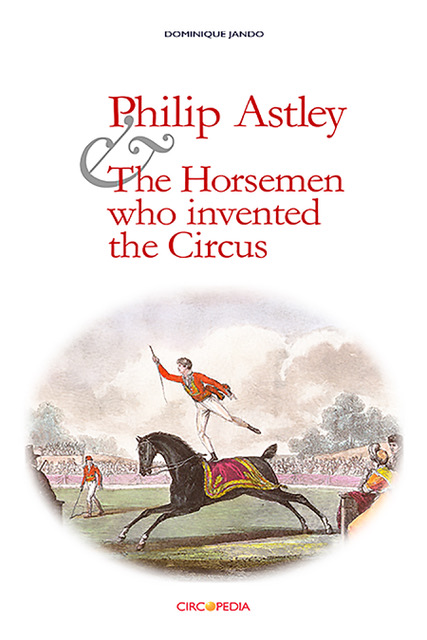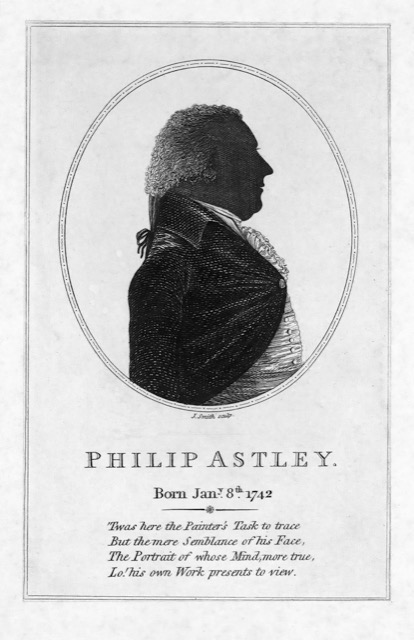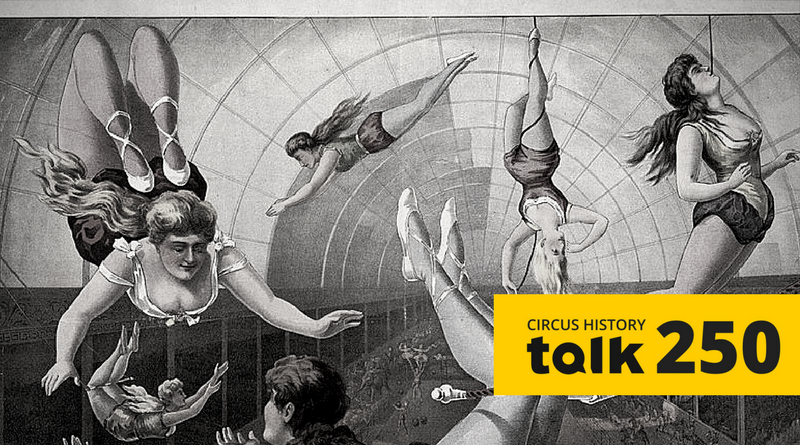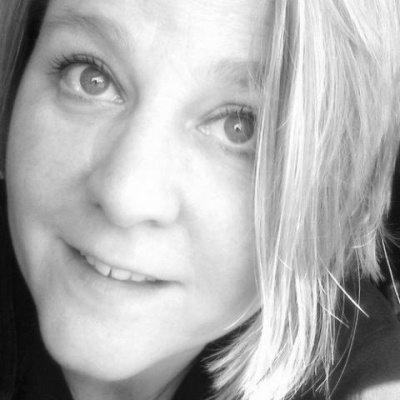Circus History Talk 250 : Dominique Jando Pays Tribute to the 250th Anniversary of Circus with a New Book
Circus Talk is happy to announce a new yearlong series titled Circus History Talk 250, where we will explore the fascinating and complex history of circus with a variety of experts, historians, researchers and writers throughout the year. We are proud to launch the series with a visit to an influential circus historian who has contributed much to our understanding about the influence of traditional circus on culture.

Dominique Jando is a modern day icon of circus, a man who has dedicated his life to the art form, through his artistry, leadership and authorship. He continues to do so with the upcoming release of his new book Philip Astley and the Horsemen Who Invented Circus. During his youth in France, he designed theater and circus posters, and he joined the circus to work as a clown, eventually working with many French circuses including Cirque Medrano. His love of circus led him to directing. He was a co-founder of the Festival Mondial du Cirque de Demain and spent years working in French circus before moving to the US where he became the associate artistic director of Big Apple Circus Astley’s amphithes and co-founder/artistic director of Lone Star Circus. In addition to writing scholarly books about circus history, he keeps connected to the modern circus practitioner by teaching master classes on clowning at San Francisco’s Circus Center.
Jando’s passion for all things circus is demonstrated by his career trajectory. Not content to simply perform and direct, he took on the advocacy position of writing about circus, and thereby establishing himself as a historian and author. He has written multiple publications on the history of circus and has lectured around the world on the subject. The release of Philip Astley and the Horsemen Who Invented Circus is timed to coincide with the year long celebration of the 250th anniversary of the birth of modern circus. In the book, Jando delves deeply into the history of 18th century origins of circus, investigating the history using mainly primary sources and unearthing many less championed influences on the circus arts.

What better way to celebrate the birth of circus, and to launch our new monthly series Circus History Talk 250 than to talk to a man who has explored that history deeply? I spoke with Jando about his book (due to be released on Amazon this spring), circus history and his philosophy about why it is so important for today’s circus practitioners to have a connection with circus history, traditional circus, and live circus performances of all sorts.
Tell us about the current work that you do in the circus field.
I am writing a book, and besides that I run Circopedia and I am the artistic director of Lonestar Circus in Dallas, Texas. My partner is Fanny Kerwich who is from an eighth generation circus family. We met in America some time ago. She had left the Big Apple Circus and she was living in Dallas,Texas because she married a lawyer. She was away from her world and we had this moment where we decided to put on a show! We had friends who were very good performers. We did so and it worked, strangely enough. We have been doing that for 11 years now.
Even after performing, and working behind the scenes for years, you continued to advocate for circus knowledge by becoming a historian and an author. Can you tell us about your motivation for that?
I have always done that–it is my life. I’ve been in the circus world for half a century. I am not someone who just discovered circus yesterday and thought it was cool. I have been doing circus since 1963 and I am a circus man. It is my life and my philosophy. I am part of the circus world and know a lot about it because we all know each other. I believe in it! Although, I was not born in it. I have always been interested in circus and fighting for the circus in France. We eventually had the French ministry of culture recognizing the circus as such– and not as being a part of some other ministry. I worked with the Big Apple Circus and fought the same fight to have recognition as circus as an art form in the US. It’s what I do!
What was your role at Big Apple Circus? How do you feel about the current revival of the company?
I was associate artistic director. It is good that it did not go down the drain. So far Neil (Kahanovitz), who is the new owner, is doing the right thing. Creatively speaking, there is some work to do, but he didn’t have a lot of time to put attention on that from the time he bought it until the time he had the show at Lincoln Center. So, we will see. To do a good circus, with great international acts is not that difficult. What is difficult is to sell the product. So I wish it well, because the situation with circus in America right now is pretty dire. You need to have a beacon of hope somewhere in terms of quality. There are plenty of small circus companies with one tissue act and one contortion act, but that will not do in circus. What you need to see is the high level, quality circus. In a way, Ringling still had that, although it was a little bit confusing because their vision was very blurry, so you didn’t know exactly what they wanted you to see. At least they had the talent. You could recognize it in the show. Now you have Big Apple Circus, Circus Flora, Circus Sarasota,Cirque Eloize, and of course, Cirque du Soleil. But it’s a big country and Cirque du Soleil and Eloize are Canadian. So in a way, the US doesn’t have much compared to Europe and to Asia.
Those guys come from old Egypt. You know, it was actually before that even, probably the first caveman who did something a little bit bizarre with people in a circle around him. He was the first circus performer!
What is the title of your new book and when will it be released?
It is called Philippe Astley and the Horsemen Who Invented the Circus. It is about the life span of Philippe Astley, but also the roots of the performing art and what is called circus arts today. Everybody is celebrating the 250th anniversary of the circus but actually that is wrong. Two years later is the real birth of the circus. Astley started performing in London 250 years ago, but the circus as we know it (with acrobats and all that) came two years later. Before that it was just an equestrian show.
Everybody speaks of Philippe Astley and repeats mistakes along the way about what he did, how he did it and why, and a lot of other people are forgotten in the story. For example, John Bill Ricketts was a contemporary who came to America. What is said in America about John Bill Ricketts is just baffling. It seems that nobody cares to research the guy and understand where he came from or what he did.There was another guy called Philip Lailson. He did a lot of circus and they had a competition together that is worth retelling. My book covers the 18th century and very early 19th because no one has gone in to detail about this period. They just mention it and move on to the 19th century, but the 18th is most important. Something that is fascinating about circus is why it suddenly happened. It happened in London. Why and why did it work so well and so quickly? Commercial theater and entertainment started at that time in the world–it got out of the court and became a real business model. At the time, ballet and theater and circus all worked together. People imagine that the circus of that time is the way it is today, but it was not. It was mostly an equestrian show where you had acrobatic acts, clowns and also pantomimes and actors on stage. It was much richer than people imagine it was and in many different ways. My book focuses on all the characters of the period–dancers, theatre actors, and so on because everything is connected and you cannot tell the story of a performing art by ignoring what happens around it at the time because the culture and events inform everything.
Who is the ideal reader of Philip Astley and the Horsemen of Circus?
Anyone with an interest in the history of circus. Also anyone who is interested in theatre history and performing arts history. It is a very thorough book. I tried to rectify a lot of misconceptions and mistakes– and God knows there are in circus history. It is a scholarly book.

Regarding the 250th celebration, there is some pushback that circus has always existed, and that it can’t be pinned to a year. How can we define circus if the definition continues to evolve and expand?
I have a full chapter on that which is called The Roots. There are what you call circus arts, which is the work of all the visual entertainers. Those guys come from old Egypt. You know, it was actually before that even, probably the first caveman who did something a little bit bizarre with people in a circle around him. He was the first circus performer! The circus is qualified by the circus artists who are in a ring. That is why its called circus. If you want to be a purist, if you are not in a ring or in the round, you are not in a circus. You are a form of visual entertainment like a variety show. It is hard for me to call circus something which has no horses but you know, things are changing. At least the physical space of the circus, containing a variety of visual physical acts, that is the circus. For me, even though I love Eloize, they are more of a variety show. Cirque du Soleil is more of a circus because they perform in the round and it has the physical aspect of it. It is a bit academic. There is a beauty to circus in the round–a communal feeling created by the performance, and that is something the theater cannot replace. At Lone Star circus, we play on stage and we are always nervous about that. There are things you can’t do on stage, a flying trapeze act, for example. In a way, the stage kills part of the circus, and that is the most frustrating thing for artists, to be limited by the space. The circus space is very special and huge and the communal feeling of the show is very important for us. Circus is a three dimensional thing.

Is it important for the circus practitioner to learn about circus history?
People in the new circus movement don’t know much about the history of circus arts, which is the most worrisome part of the story because you cannot have evolution if you don’t know your history. You have to have a solid foundation. Imagine a ballet dancer who never heard of Baryshnikov or Nureyev! In the circus– that’s the case.They do something and they think they are great, but they’ve never seen another act in the specialty they do at a high level to just have an idea of what their level really is and what can be done with the apparatus. My wife, Elena Panova, is a famous Russian trapezist who teaches. We ran a professional aerial program at Circus Center in San Francisco for 5 years. A lot of our graduates are working around the world, but when they came they didn’t know that to do hoop you need to be a contortionist and you need to do acrobatics. We showed them a video of Elena Serafimovich, who was one of the great hoop acts of all time, and they looked at that and they couldn’t believe it. We showed them a lot of videos and films as part of the curriculum. The idea is that you are not creative if you don’t’ know what happened before.You think you invent something when actually it was done before and much better. So it’s better to know what was done before and then improve on what was done.
I think many of the contemporary schools now have recognized this and started to teach circus history classes as part of their curriculum.

Circus is a little bit behind in terms of recognition because there is no pride in its artistic heritage. I have something that is a little bit special and that is that I worked in the circus. So I have a way to translate history. It’s not only theoretical–it is very practical. Who are the teachers of circus arts today? In Russia at the Moscow Circus School we visited two years ago with (my wife) Elena, who is a graduate, she was in shock because the teachers were her former students. It was a little bit weird, but they became very famous performers and what they are passing to the students is their own knowledge. It’s important to have teachers who have had careers as performers first. Because the technical part is fine, but (you need) to have the artist able to say “If you try to do that in performance, it won’t work.” Most of the teachers today, with few exceptions, don’t have this experience. If you don’t have these people who pass on the knowledge, you can surround students with choreographers, technicians, gymnasts, etc.but it will make no difference– you need the artists to teach. You would not go to a great ballet school like Juilliard and be taught by someone who has never performed.
Young circus artists today don’t even go to the circus. You have to go to every circus! You never know what you will see and you will learn a lot. You always learn something, but if you stay in your bubble, in your little world and community of talented people, you are not going to evolve.
...Do you have a story to share? Submit your news story, article or press release.




